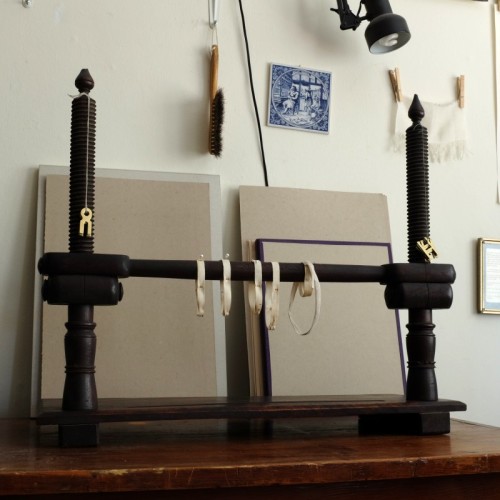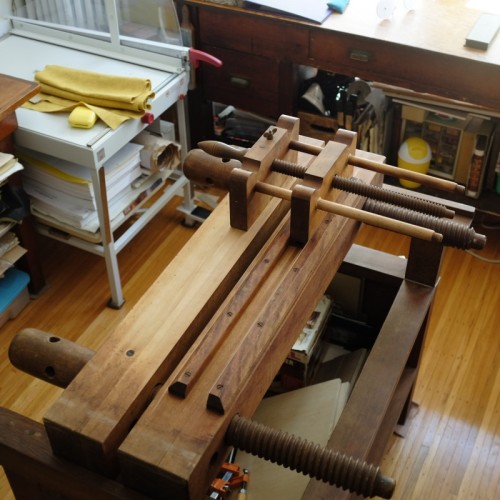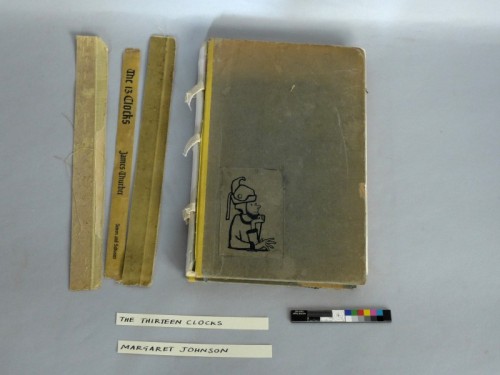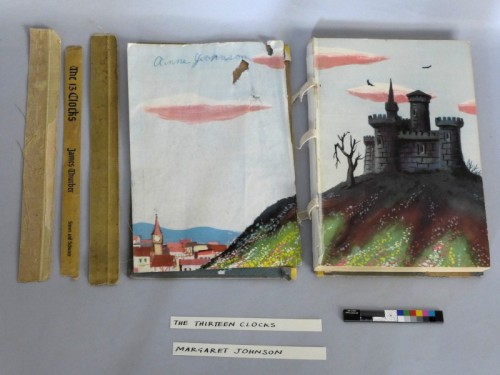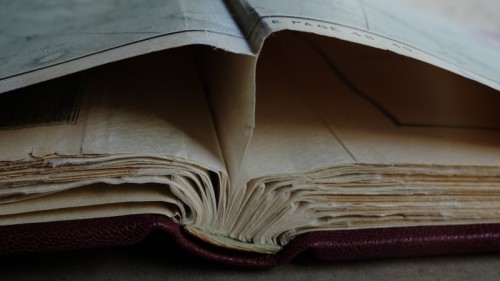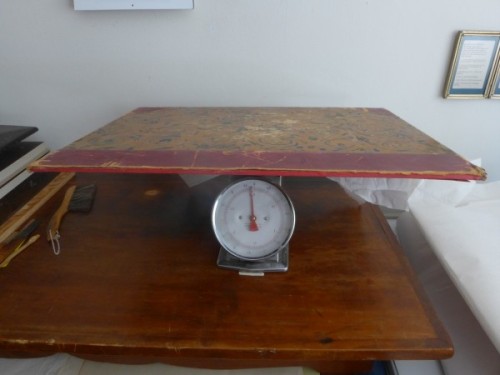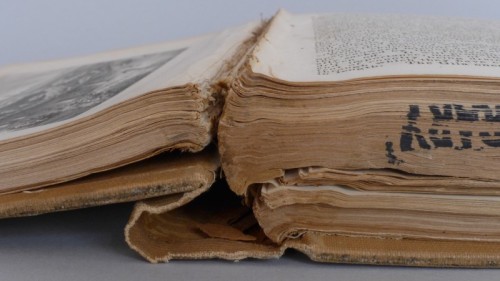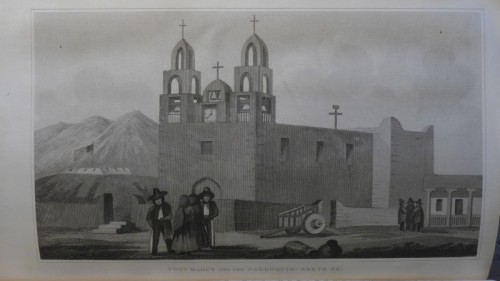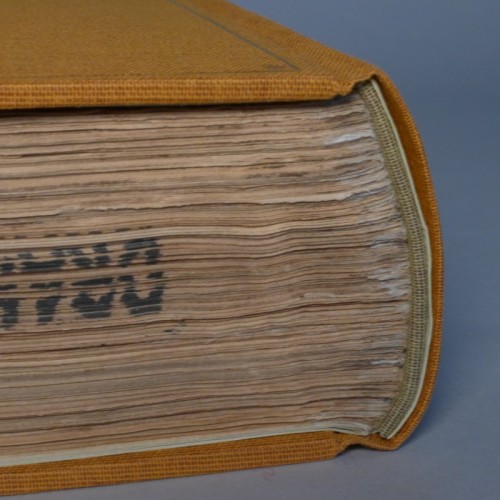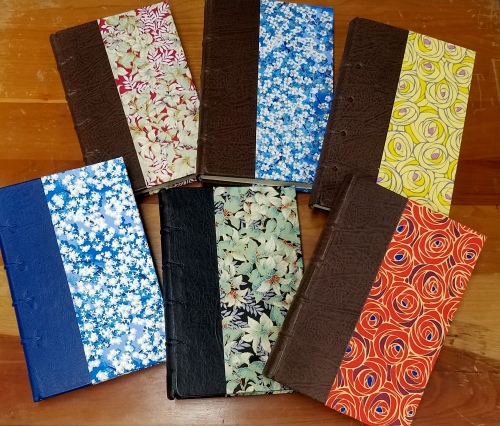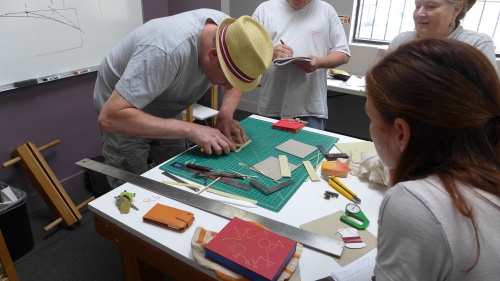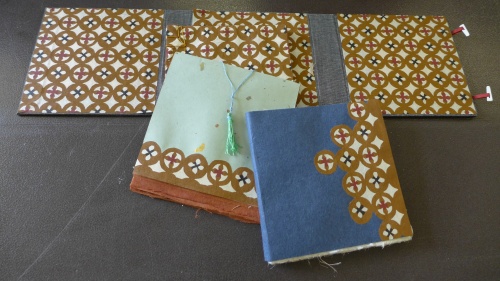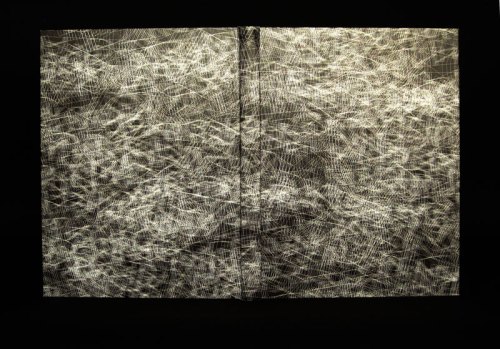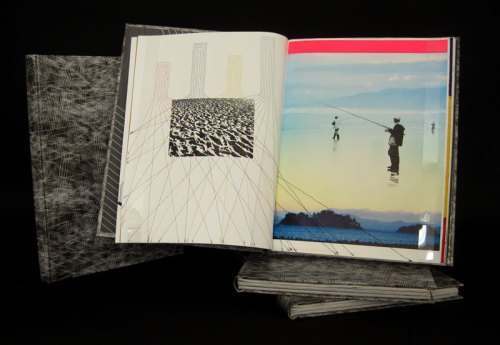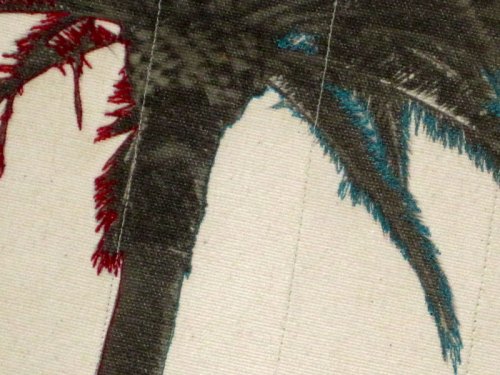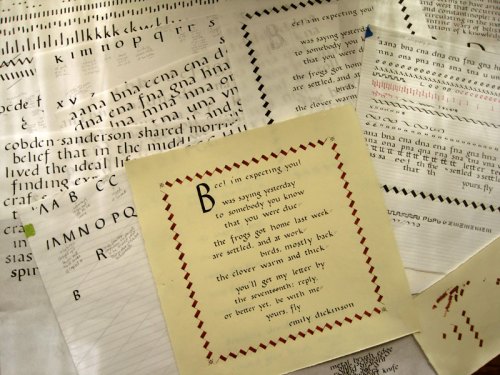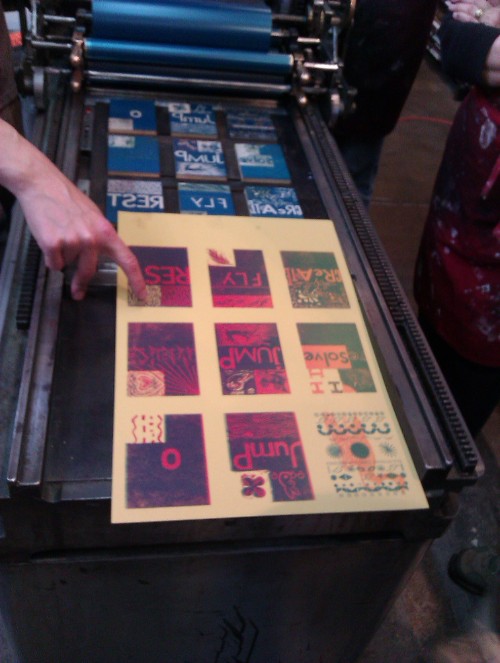Recently at the Center for the Book where I teach, the Studio Manager received a phone call from the family of a bookbinder who had passed on. Instead of selling her tools and materials, the family wanted to donate these precious items to a place where they would always be used and appreciated. As one of the Center’s many bookbinding instructors, I have a deep appreciation for this impulse. Any additional tools and materials available in the classroom save time for students, who are ever eager to dive into the next step in a project. It is a critical part of my job as an instructor to show students the correct use of these tools and equipment to ensure their longevity. This will also (I hope) widen the understanding of these tools so when the students see similar items out in the world, they will know how to properly use them.
As someone who has been involved in bookbinding for over 15 years now, I have seen the tools and materials of binderies change hands. Occasionally I have been the beneficiary, though more often not, but it’s always interesting to see what other binders save and what they use. There are always little home made or DIY jigs, guides, workarounds, and even whole pieces of equipment that people have fabricated to achieve the highly specialized goals we need to attain in our work. These are the unpaved footpaths of bookbinding. Often a secondhand piece of equipment is covered with notes or markings (usually on dried-out masking tape) based on the settings a repeat job has required. Sometimes I think I could write a whole separate blog on this topic alone.
For all these reasons, I have a strong need to be a good steward of the tools and equipment I use, and a need to use the highest quality materials I can find and afford. This principle affirms high quality work all around. But it also allows me to repay the debt of trust I owe to the people who have given, sold, or traded their items to me. Bookbinding is not possible, or at least not feasible, without highly specialized equipment that is generally no longer manufactured. With few exceptions, everything I use daily in my work is something handed down from the past.
One example is this wooden sewing frame. I did not look for one of these for my bindery for many years, not really needing one too much, or at least, not believing I did. But since I have had this one, I have found reasons to use it, and it has been amazing! When it first came into my possession, I immediately purchased 5 sewing keys for cord and 5 for tapes, to make sure it had the correct accessories. I know not everyone in bookbinding likes using sewing keys, but once I got used to them, I have never looked back.
In the past, I have not often had a need for a sewing frame; sewing on external raised supports, or even sunk cords, is not something I do too often professionally, so I have never pursued finding one. Even when sewing multiples, I have often used a simple hobby-frame I acquired while in bookbinding school, and that’s worked well.
However, by hook or by crook, this beautiful old sewing frame seemed determined to find its way to me, and I must admit it has cracked the doubting facade of even this stubborn bookbinder. I found an excuse to give it a whirl, and while it has its challenges, it has a strong draw. I have to be careful in using it, and navigate around its highly charactered nature. But I wanted to share some pictures of it to give you an idea of how important it is (to me, anyway) to preserve and respect the tools of the past.
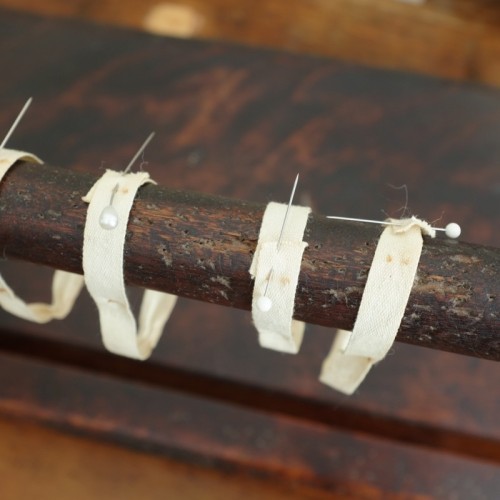
Just a little beausage to remind me I’m not the only one who really uses stuff! I’m not even this bad.
Another item is the giant press and plough which takes up the bulk of space in my tiny bindery. It was passed on to me from a bookbinder who had stopped practicing, but had learned from Bob Futernick in years past. Bob, a bookbinder and woodworker both, made the tub for the press. A press this large is highly susceptible to damage without a proper tub, and this tub is proper! When this came into my possession, I knew right away it needed a plough to go with it. As luck would have it, a student had emailed me some months prior to let me know she had one that she was looking to sell. At the time I thought in the back of my mind, “Good luck! That plough is humongous; you’re not likely to find someone with the right size press for it.” Well…
Another set of items for which I will be forever grateful is from fellow bookbinder Margaret Johnson. She has been a great friend and mentor to me. She sold many of her tools and equipment when she decided to stop binding at 92 years of age. Always concerned with the future of her favorite craft, she generously donated the proceeds from the sale to the Jane Aaron Scholarship Fund, which provides scholarships to Hand Bookbinders of California workshops. There were many odds and ends left over, and those she offered to me in exchange for wrapping up some of the bookbinding projects she couldn’t finish.
I was honored to have this opportunity. It’s a rare thing when you get to do work for another bookbinder. I always do my best work of course, but it’s got to have more meaning when you know the recipient will recognize the things you did to make the work shine.
One small piece of news this month somewhat related to the topic of Appreciation: bookbinding supplier Colophon Book Arts has recently changed hands. This is a big piece of news to me, since I’ve been making a point of purchasing from this small, dyed-in-the-water (the former owner was a marbler) bookbinding supplier for years. I’ve been very happy with her choice of stock, and her way of doing business. I thank Nancy Morains for her many years of service to the bookbinding community, and wish her well! The new owner is also someone very active in the bookbinding community, and although the business is moving quite far away from me to Indiana, I look forward to continuing to order from Colophon. You can see some pictures of the move here on her Instagram.

